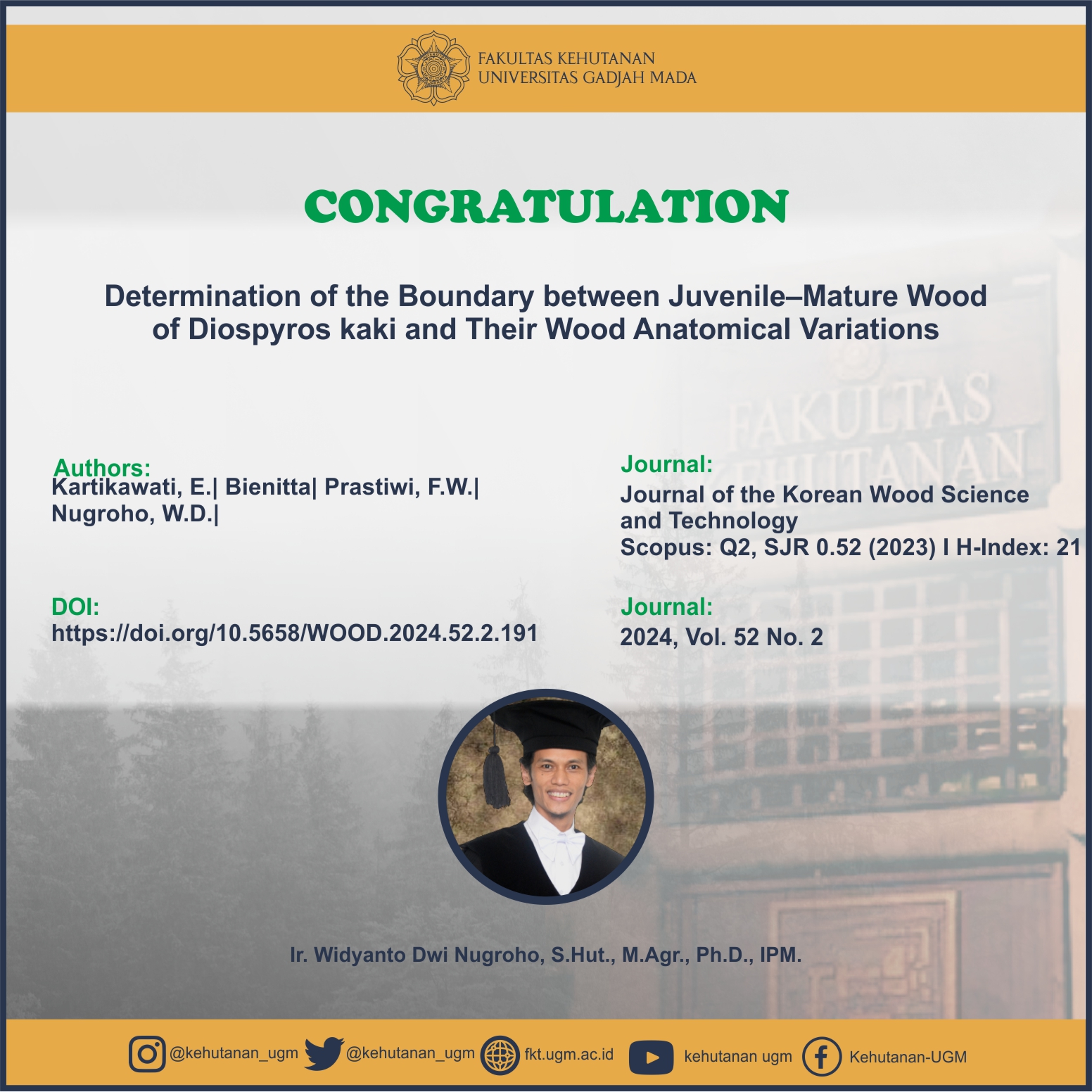
Abstract
Persimmon wood (Diospyros kaki) is a seasonal fruit-producing plant with a beautiful dark pattern in its wood that is suitable for high-quality furniture, sculptures and musical instruments. The utilization of persimmon wood can be improved by determining its anatomical characteristics, such as juvenile and mature wood. This study aimed to determine the boundaries between juvenile and mature wood and observe the anatomical properties of juvenile and mature wood and their variations in the axial direction. Three 30-year-old persimmon (D. kaki) trees grown in Karo, North Sumatra, Indonesia, were used in this study. The boundary between juvenile and mature wood was determined by measuring the fiber length and vessel element length from near the pith to near the bark. Anatomical observations were conducted in the juvenile and mature wood areas. The results showed that the average boundaries between juvenile and mature wood were 44.11 mm from the pith and were not significantly different in the axial direction of the trees. Furthermore, the wood anatomy categories of juvenile and mature wood differed significantly in terms of fiber diameter, fiber proportion, vessel proportion, and axial parenchyma proportion. In the axial direction, vessel diameter, ray parenchyma frequency, and ray parenchyma proportion at the base, middle, and top of the tree were significantly different.
SDGs:
1. SDGs 3:Good Health and Well-being
2. SDGs 9:Industry, Innovation, and Infrastructure
3. SDGs 12:Responsible Consumption and Production
4. SDGs 13:Climate Action
5. SDGs 15:Life on Land
Link Dokumen:
Download
